The Crickhowell District Archive Centre has gained a strong reputation for supporting local history and growing the quantity and quality of the documentation and pictorial material it holds. It has already published many booklets and pamphlets on a range of topics, but the Centre has also now published a growing list of more substantial books, drawing on a number of different local history themes. ‘Great Houses of Crickhowell’ is their latest offering, and stands as a major work, presented through the collaboration of three very knowledgeable and experienced authors.

This comprehensive work of nearly 300 pages, devotes chapters to each of five great houses across the Crickhowell area, namely: Cwrt y Gollen; Gwernvale; Dan y Parc; Llangattock Park; and Glanusk. There is an interesting foreword by Dame Shan Legge-Bourke who still lives at Glanusk and is the Honorary President of the District Archive Centre. There are also sections on further reading and notes and acknowledgements from the authors and indeed a very useful ‘timeline’, which details events for the Great Houses themselves, set against events at a National and International level.
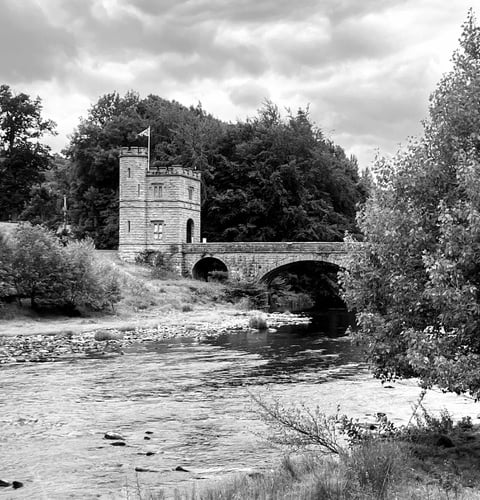
Sadly now, only two of these great houses remain, but the history of these buildings and their estates and more importantly, that of the people who owned them, lived in them and others that worked in them, provides a fascinating story with references dating back, in some cases, to the sixteenth century. As the Introduction to the book points out, in this type of publication, there can always be a debate about what to include and what to leave out but some of the other houses of significance in the area are given a mention with some additional signposting and referencing.
The book contains a wealth of detail for each of the five houses included and has drawn this material together from quite a wide range of sources. The thoughtful and carefully researched detail is often supplemented with maps, pictorial and graphic images, many of which have not before, appeared in print.
The three authors involved are very eminent historians in their own right and are renown in their field in national and international circles, so we are very fortunate to be able to benefit from their skills when applied to the local history of our area. All three have already made significant contributions with previous publications. For example: Elizabeth Siberry wrote Crickhowell Through the Eyes of the vVisitor 1740-1910 [with Grant R., and Gibbs W.]; Ryland Wallace wrote Young Men to Arms [with Williams G.] and Crickhowell High Street Across the Decades [with Webb J. and Lewis C.]; and Eliane Wigzell wrote Crickhowell 1881.
Great Houses of Crickhowell builds on these earlier successes and provides another unique framework to reveal the life and times of Crickhowell both in a local and national context. It is amazing to note just how many of the various family members that owned and lived in these houses and their sprawling, landed estates, could be counted as key ‘movers and shakers’ of their day.
Many of them were indeed players on the big stages, from Civil Wars to World Wars, from Parliament and politics to clergymen and other professions that required a university education. There were those with royal connections and those that were connected to diplomatic networks with service required overseas. Indeed, Crickhowell at one point, was even the headquarters of an order of chivalry. Clearly many of the families were aristocrats of their time, and many had links to the forces and fought for their Country in a range of conflicts.
We see Members of Parliament and others with importance and influence. We also see self-made industrialists making a fortune from their iron works just over the hillside towards Beaufort, Nantyglo and Ebbw Vale. At least 3 ‘iron masters’ and their families were at one time resident in the area, and it is somewhat ironic to find that one of these Great Houses, Llangattock Park, later in its ‘life’, was actually bought by Richard Thomas and Baldwin in the 1950s, at that time one of the country’s biggest steel manufactures with a giant plant in Ebbw Vale, that then used it as a training centre for its staff.
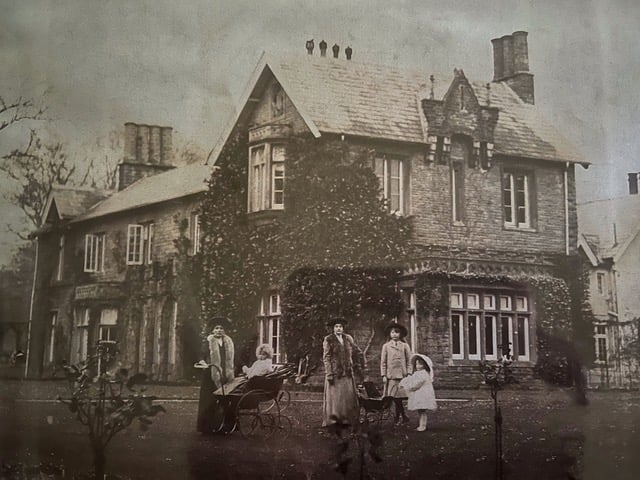
Anyone with a deep or even passing interest in history will surely find something of interest when picking up this book and dipping into to it. Those with any local knowledge or direct family links to any of these houses themselves though, will find a great deal of added interest. Whilst the book provides a great deal of historical detail, as you might expect covering hundreds of years, there are also a few little unexpected gems of information that pop out from time to time. For example, I’ve often wondered why the pub in Llangenny was called the Dragon’s Head and this book offers up an explanation. Also on a personal level, I live quite close to Cwrt y Gollen and learned that the owners, the Sandemans, who actually ran two estates in the area at the same time, employed a gamekeeper. This gamekeeper lost his life in the First World War, but his surname is the same as those that once owned the house that I now live in, so would probably be descendants or related to him in some way.

Then you come across some intriguing photographs which spark some added interest – why are there soldiers from India on the High Street in Crickhowell?
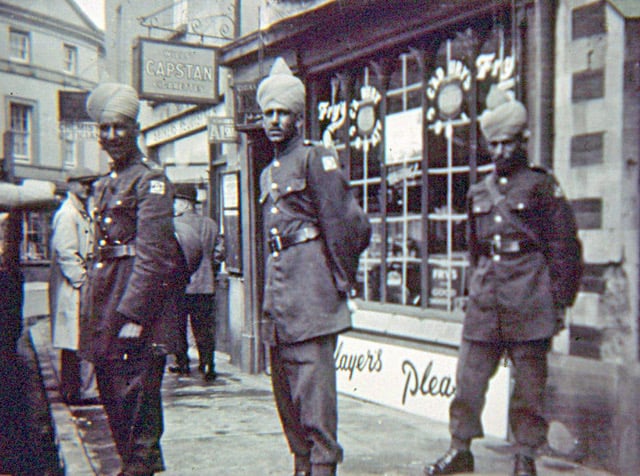
Whilst many of the people that owned and lived in these five great houses were clearly moving around and had many contacts across the area and further afield, it is also reassuring to see them spending time and energy on local matters. Some were involved with the management of the local workhouse whilst others served as justices of the peace and many were actively supporting the church and in some cases providing personnel in the form of churchwardens, rectors and vicars. These great houses also, of course, provided employment for many people in the local area and much patronage for local businesses. There also seems to be a clear and active desire from many of those that resided in these great houses, to engage positively with the local community. They owned farmland, so entered animals into the local agricultural shows, and also entered produce from their gardens, into the Crickhowell Horticultural shows.
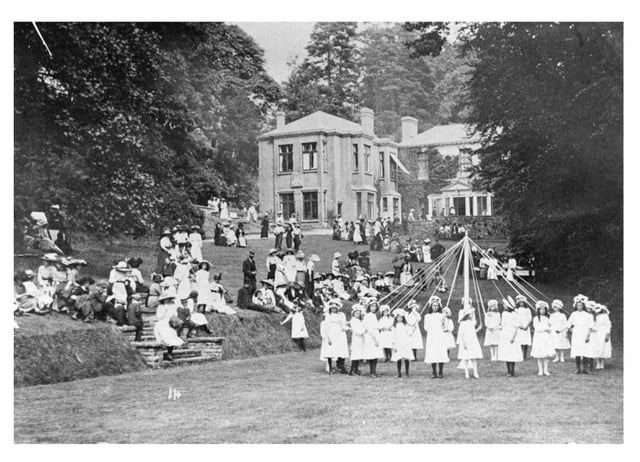
In past times, when hunting was still considered as a sport, many of the great houses had people who were members of the local hunt, and from time to time, hosted sporting and shooting events for their guests. In addition, of course, their fishing rights in the river Usk were fiercely protected! However, even though the families might have engaged in shooting animals for sport, they dearly loved their own pets with the photographs of the pet cemetery at Dan y Parc, with its inscribed headstones, revealing another, more gentle and emotional dimension.

The ordinary souls in the lower classes of society might have seen the privileged, landed gentry, living in these Great Houses, as a race apart, but whatever your view on class differentials, what often comes through, in these local history stories, is that the human elements of life are experienced and felt by all. Lots of children died young, many women died giving birth, lots of relatives were taken by wars and conflicts and lots of friends and relatives were taken by the many diseases of the time. Property too, could be destroyed by fire, as in the sad case of Cwrt y Gollen in October 1909. The local paper though, records this event with some irony: ‘The Abergavenny Fire Brigade which had been summoned by telephone was on the spot with commendable promptitude, but all to no purpose as there was no water available!’
These tragedies operated across the class divides but often, those who did live in more grandeur, naturally generated more documented evidence that survives to tell the tales that sit behind the mere detail of names and dates. As well as the information from registers and censuses, therefore, this book provides additional insights from common sources such as newspaper accounts, obituaries and memorials, but also uses more intimate information from letters, diaries and personal accounts, some of which that have never before been published. The beauty of the book is that all this historical information has been collected and presented in relation to each house, so that the stories can be traced through time and in context.
Those of us that live in and around Crickhowell can sometimes take its beautiful setting for granted, and it might be hard for some to understand that in past times, visitors ‘of means’ would regularly visit the area to take in what it had to offer. So whilst the various families in the great houses often mixed with each other, they also drew in a host of other visitors and people from further afield to include: artists; writers; archaeologists; clergy; and their own family connections through marriages that now might see those relatives living in ‘great houses’ built in other areas of the country.
For some owners, these great houses were mere residences in the country to be used for short periods for leisure and relaxation from their main work, further afield, or abroad even. Some would have additional properties in other areas, including London, and many would have travelled across Europe for pleasure and sometimes work, with others operating even further away. George Everest [1790-1866] for example, was Surveyor General of India. He was the second son of Tristram Everest that once owned Gwernvale [now the Manor Hotel] in the late 1700s and early 1800s.
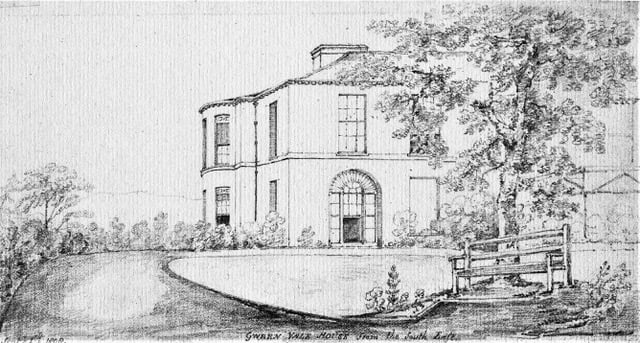
Many local people have often referred to this family connection and noted that, the gentleman who gave his name to the highest mountain in the world, was born and lived in Crickhowell. Now we don't want actual facts to spoil a good story, but the book points out that the Everest family had other properties in London and considers it as ‘unlikely’ that George would have been born at Gwernvale, given that his baptism records are held in Greenwich.
No doubt he would have lived in the Great House for some of the time though, so the connection is real enough even if the detail is probably hard to fully establish. On the up-side, the Everest family were present when in 1804 ‘a distinguished group was involved in the excavation of a neolithic long cairn’. Those involved were indeed distinguished and included two Knights of the Realm, an Admiral and two eminent historians. Nothing much however, was found except for ‘small bits of charcoal and several small bones’!
The stories and details provided on each of the five great houses in this book, paint a detailed and colourful picture of the life and times, not only of the actual residents and families involved, but also of the way in which the local and wider world worked, through these ages. From a time when the area was just rolling hills and green vales through many trials and tribulations, successes, failures, triumphs, periods of revolution, social unrest, and industrial advancement, wars and conflicts across the world, this book beautifully charts the stories of local people and the five Great Houses they lived in, set against the backdrop of local, national and world events. From green acres to the Green Man, this is certainly a tremendous body of work and one which, no doubt will be held in high esteem for years to come. The authors and the publishers can all take some satisfaction in a job well done.
The Great Houses of Crickhowell by Elizabeth Siberry, Ryland Wallace and Eliane Wigzell is published by Crickhowell District Archive Centre and is available on-line and in store at: The Crickhowell District Archive Centre; Crickhowell Resource and Information Centre [CRiC] and from Bookish in Crickhowell and Abergavenny.
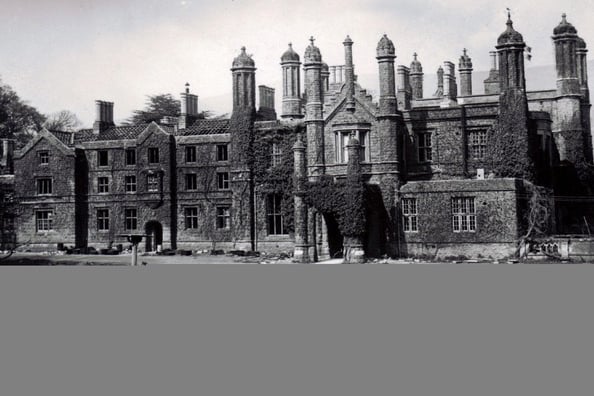
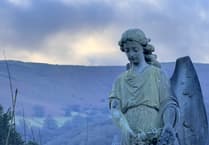

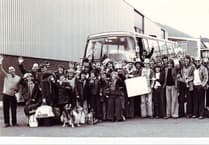

Comments
This article has no comments yet. Be the first to leave a comment.